All kinds of bird extermination
(Baonghean.vn)- Trapping wild birds for a living is a profession chosen by many farmers in Quynh Luu (Nghe An) as a "fishing rod" during their free time. In addition to the available "tricks", they "constantly innovate" to exterminate wild birds...
Unique bird trap
Usually, March and August (lunar calendar) are bird trapping seasons. Depending on the characteristics of each species, whether they avoid storms or forage a lot at a certain time, the hunter will arrange appropriate tools. In February, they "catch" swallows. Storks, egrets, and larks are "hunted" twice a year, one season in March, the other in July and August. In April, they "catch" orioles, and sparrows are "hunted" all year round, but most often from January to June... Depending on the type of bird, the "hunting" method is also different. Storks, egrets, larks, orioles... are "hunted" with plastic sticks; cuckoos, pheasants... are "hunted" with nets; swallows, sparrows... are "hunted" with traps.
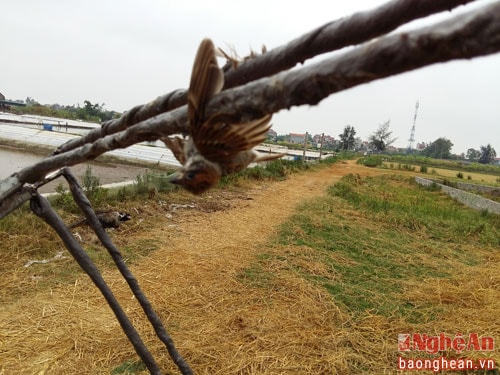 |
| A bird was "beaten" with a plastic stick |
Spending only from 200,000 VND to 1 million VND, people can have a trap set for "catching" swallows or sparrows. It includes a piece of net, 2-3 meters wide, about 20 meters long. The trap is closed at both ends or one end depending on the length of the net. With a short net, people fix the two ends with two bamboo tubes, connected to a steel bar or bamboo stake driven into the ground at a distance of about 1 meter. If you have a long net, people will hold one end with a bamboo piece longer than the width of the net, and use their hands to directly control it. A trap closed at both ends can only catch one side, but a trap closed at one end can flexibly catch both sides. The traps are cleverly built so that they can be raised and lowered easily according to the hunter's wishes.
“Swallows are birds that seem to have no fear of humans. They are hovering around catching prey, but when they hear the cries of their kind, they immediately fly over. When they see their friends floundering on the ground, they immediately swoop down to save them. Just waiting for that, the bird trapper will quickly swing the net or pull it down,” said a long-time “swallow trapper” in Quynh Thanh commune (Quynh Luu).
Under the dangerous net, the unfortunate bird fell down, lying flat on the ground, its talons tightly gripping the mesh. The swallow hunter removed the bird and put it in a cage. At this moment, the “messengers” of spring looked pitiful and miserable. Every bird had been hit hard. Some were stunned for a moment and then regained consciousness, but others had accidentally hit the net posts and were covered in injuries. Their heads, beaks, and wings were bleeding, they lay gasping in the cage and died miserably.
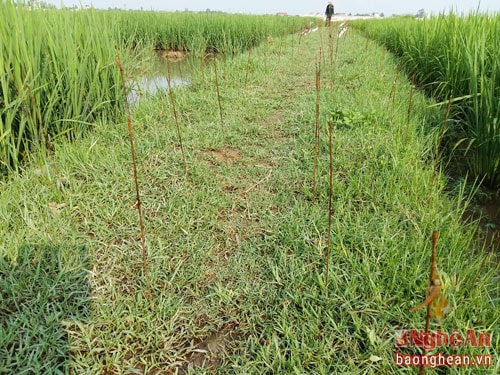 |
| Bamboo cuttings areplanted densely along the rice fields |
For the stork, you have to “hit” it with a plastic-wrapped stick (also called a hom). The hom is whittled from a bamboo tube, about 2 spans long for an adult, and as small as a bicycle chopstick. The base of the hom is sharpened like a spike so that it can be driven deep into the ground, and the upper half of the tree is wrapped evenly with a special sticky layer of resin. According to those who have many years of experience in shooting storks, the old type of hom “eats” the resin better than the newly whittled type.
In the early mornings, when the wind turns to the East, hunters carry bamboo cuttings and plant them densely along the edges of the fields, on mounds hastily built with soil and grass. The decoy storks used as nam (storks peel off their skin and feathers and stuff them with straw or carved from a piece of white foam) are spread out by the hunters all over the fields. Meanwhile, the live storks used as machines stand on bamboo poles, about 2 meters above the ground. The mechanical storks, the small nam storks perch and the small ones fly, are arranged very skillfully. The flock of storks in the sky cannot know that it is a trap.
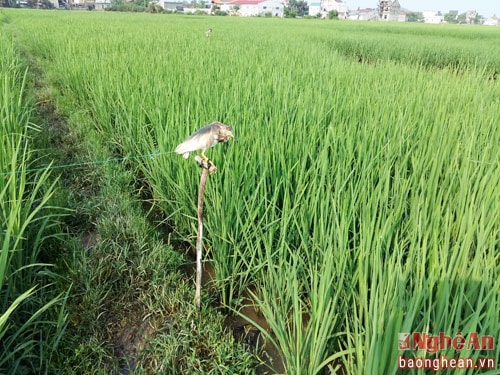 |
| A decoy stork spread by hunters in the field |
When they were done, the hunters returned to their temporary huts, cleverly camouflaged with tree branches about a hundred meters away. Their eyes were strained, waiting for flocks of storks to fly over. “You have to be very sharp-eyed to spot a flock of storks, when they are just a small dot in the sky. Wait a while for them to fly near the field, then pull the fishing line tied to the storks’ ankles. Mistaking their kind for a signal that there is plenty of food here, the flock of storks flying low over the field finally swooped down,” shared a stork hunter in An Hoa (Quynh Luu).
Sometimes they swoop down in hundreds on the fields. Waiting for that, people rush out to catch the storks and put them in a big cage.
"Fishing rod for rice" from the extermination of wild birds
Nowadays, although hunting wild birds in the fields in Quynh Luu (Nghe An) is still mainly done by hand, the level of catching is increasingly sophisticated. People even buy a whole set of equipment, including batteries and speakers to play pre-recorded calls of decoy birds. To save costs, some workers only use their phones to record the calls of birds and then turn them on to lure the prey closer to the trap. Thanks to the help of technology, countless innocent birds have become, are becoming, and will become food on the drinking table.
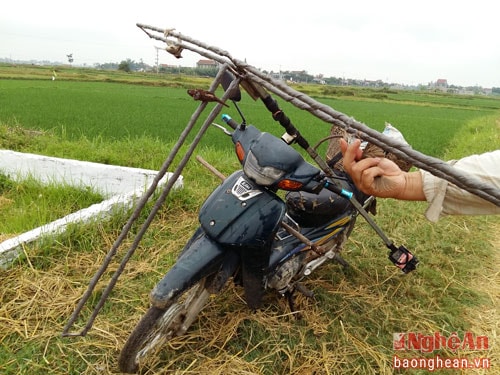 |
| The method of "beating" birds with plastic sticks is commonly used. |
The price of birds depends on the season and the year, but hunters consider it relatively stable. "This profession does not require worrying about the output because there are buyers coming to the house, sometimes people even buy them right at the scene and then bring them to the northern provinces for consumption... Just count the bird heads and multiply," said a bird hunter in An Hoa commune (Quynh Luu).
In recent years, the coastal area of Quynh Luu and Hoang Mai town (Nghe An) has seen the emergence of many shops and restaurants to serve the dining needs of tourists from all over the world, so a large number of birds have been collected and supplied to the above locations by specialized collectors.
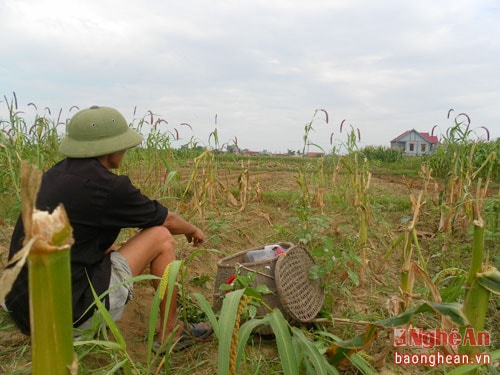 |
| A hunter patiently waits for the bird to take the bait. |
A skilled craftsman can earn millions of dong from catching birds every day. Specifically, the price of birds sold to the broker is from 20,000 - 25,000 VND/bird; sparrows 4,000 VND/bird; swallows 3,000 - 4,000 VND/bird; sparrows 5,000 - 6,000 VND/bird; there are two types of quail: silver-cheeked quail 40,000 VND/bird, red-crested quail has a higher price of about 70,000 - 75,000 VND/bird; male oriole is 40,000 VND/bird; female 15,000 VND/bird...
With the income from this activity, many people are looking for ways to exterminate wild birds.
Nguyen Hoe
| RELATED NEWS |
|---|

.jpg)
.jpeg)



.png)
.jpg)
